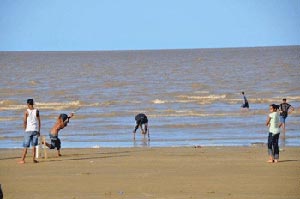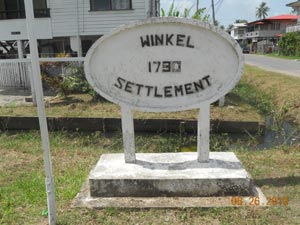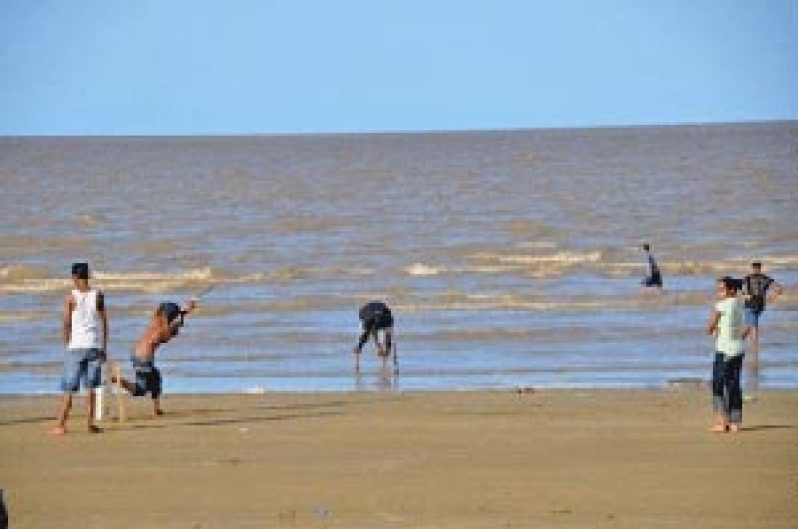WITH its three townships, the county of Berbice — which conjures images of Dutch architecture, agricultural plots and industrial estates — has tremendous potential for tourism; but there is a lone tour operator, who is yet to unveil most of the region’s history, character and special features.
 Commonly known as The Ancient County, Berbice is quickly transforming into a tourist location, instead of the traditional transit point linking the Demerara county and its eastern neighbour, Suriname.
Commonly known as The Ancient County, Berbice is quickly transforming into a tourist location, instead of the traditional transit point linking the Demerara county and its eastern neighbour, Suriname.
Visitors can commute along what is reputedly the longest straight road in the Caribbean, commonly referred to as the Number 19 Roadway on the East Coast of Berbice, and travel along the jet black waterway of the Canje River, where the nation’s bird, the Hoatzin or Canje Pheasant, along with hundreds of other species of bird, can be easily seen by bird watchers occupying the river’s edge.
A careful glimpse would also reveal monkeys jumping from tree to tree as they curiously attempt to analyze the intentions of their visitors.
And for those who may be otherwise engaged and cannot take a trip along one of the many waterways, a visit to the juncture in Canje where Burnt Bush meets Cumberland, Sheet Anchor and Number Two Village, or at Chapel Street in New Amsterdam during the Sunday morning hours, can witness a battle for whistling supremacy among the ruddy-breasted seed eaters, or the Towa Towa and the Fire Red, wherein the winner flies off with the title of the best whistler and shares substantial earnings with its trainer.
The Canje River, a tributary of the Berbice River, supplies water to the Guyana Sugar Corporation estates, the Manarabisi Rice Cultivation, and the entire Black Bush Polder agricultural scheme. It was once the home of Coffy, a house slave at Plantation Lilienburg who led the famous Berbice Slave Rebellion of February 1763.
The African influence is still felt in the county, with the annual practice of its Soiree festival held to usher in Emancipation Day. The event is held in recognition of the African ancestry at Hopetown, a village on the West Coast of Berbice which was bought by 11 ex-slaves after Emancipation.
Additionally, an invitation to a wedding can further reveal one or more of the many cultural festivities still in vogue in The Ancient County, namely the Queh Queh and the Cumfa, which are art forms traditionally practised by persons of African ancestry. Moreover, a visit to any of the Berbice top four sugar estates – Blairmont, West Bank Berbice; Rose Hall, East Canje; Albion in Central Lower Corentyne; or Skeldon, on the Upper Corentyne coast, would reveal wooden edifices in their original designs, reflecting previous symbols of wealth and prestige of the colonial planters, still standing in all their grandeur.
Moreover, a visit to any of the Berbice top four sugar estates – Blairmont, West Bank Berbice; Rose Hall, East Canje; Albion in Central Lower Corentyne; or Skeldon, on the Upper Corentyne coast, would reveal wooden edifices in their original designs, reflecting previous symbols of wealth and prestige of the colonial planters, still standing in all their grandeur.
The layout of Blairmont Estate has remained unchanged from the colonial period, and visitors can observe the arrangement of the sugar cane fields and the industrial, managerial and domestic homes.
The Berbice River bridge, the sixth longest floating bridge in the world, links the region with Demerara, and is described as a part of the South American highway network which would significantly improve the road system between several regions.
At Fort Nassau, approximately 30 miles up the Berbice River, evidence of Dutch occupancy is evident, as visitors walk among the ruins of the Court of Policy Hall and the barracks, or explore the two cemeteries, each of which has intricately designed marble tombstones.
A trip along the Corentyne Coast would lead to the most popular #63 beach, commonly used for recreational purposes like swimming, leisure and worship, but of recent times, it has been transformed into an outdoor sporting facility where competitive volleyball and cricket games are played under floodlights.
Other activities, such as throwing a seine and catching fish and shrimp, can also be engaged in at this location.
Berbice, more particularly Port Mourant, is the home of Guyanese cricket legends and cricket heroes like Rohan Kanhai, Alvin Kallicharran, Joseph Solomon and John Trim, amongst others, who have represented the country and the region on the international landscape. Visits to the homes of these cricketers can be arranged.
In addition, Plantation Port Mourant was also the home of former President Cheddie Jagan, who had studied dentistry in the United States before returning to his homeland and becoming actively involved in political affairs which propelled him from being the son of a foreman on the sugar plantation to being the Head of State of the Republic of Guyana.
Berbice also boasts two administrative regions, namely Region 5, encompassing West Coast and Bank of Berbice; and Region 6, encompassing its eastern coast and bank. Moreover, Berbice is the only county which has three towns.
While the Mahaica/West Berbice area consists of the Mahaica/ Mahaicony/Abary Agricultural Development Authority (MMA/ADA), a water conservancy aimed at improving the drainage and irrigation of the area, the East Berbice/Corentyne Region 6 has among its many places of interest the Amerindian reservations where the Arawak tribe can be found at Orealla, Epira and Siparuta.
At Orealla, which is several miles up the Corentyne River, the indigenous peoples continue to engage their age-old practice of cultivating root crops such as yams and cassava, the latter of which produces cassava bread, farine, paiwari, and cassiri — famous indigenous drinks, and cassareep, the main ingredient in Pepper Pot.
The Amerindians are known to be great craftsmen, making the hammock, various baskets, intricately made costume jewellery and nibbi furniture.
On leaving Orella or Siparuta, the visitor can motor to Moleson Creek from Springlands for a scheduled ferry service across the Corentyne River, where daily visits can be made to our CARICOM neighbour Suriname; or the visitor can remain at Corriverton, one of the three East Berbice townships, where they can ride in a Tapir, a vehicle found only in Guyana.
At Black Bush Polder, just off the Corentyne thoroughfare, one will find a former large swamp area has been turned into a thriving agricultural community which supplies green vegetables and ground provisions to other regions countrywide. Rice is also extensively grown there, and substantial cattle farming takes place there also.
One can find the St Francis Community Developers, the lone Caribbean-based organisation which has a special emphasis on training grass roots persons in community development, at Rose Hall Town.
New Amsterdam, the first township in the county, is known for its architectural edifices which represent public offices and churches. The State House, Mission Chapel, the Town Hall and All Saints Scotts Church are just a few examples.
The Winkel Settlement is a village once inhabited by enslaved artisans and craftsmen who were instrumental in constructing many of the historical structures in the township.
Estate Highbury, now a village on the East Bank of Berbice, was the final destination for East Indians who sailed on ‘The Whitby’ vessel from India to then British Guiana, bringing immigrants to work as indentured labourers on the sugar plantation.
Each year on May 5, the immigrants’ ancestors dress in their traditional saris, shalwars and kurthas and journey to the site via trucks, cars and other modes of transportation to reflect on Indian arrival to British Guiana. There are cultural presentations, and addresses are made by religious groups and prominent members of the citizenry. Additionally, sweet meats and other foods reflective of their Asian culture are shared to the hundreds gathered.
Apart from that annual pilgrimage, visitors can attend a traditional Hindu wedding, where seven curry is eaten in the leaves of the water lily, which is biodegradable and reduces garbage,
For further experiences in the Ancient County, visitors can witness signature events such as horse racing, cricket, crab and red shrimp catching.
Berbice is the country’s backbone in terms of sugar production, besides livestock, bauxite, sea foods and cash crops.




.png)









